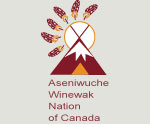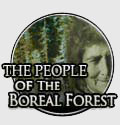Changing Communities
Quicklinks Lessons
- Grade 2 Lesson:
- Cree Communities
- Grade 3 Lesson:
- Changing Communities
- Grade 5 Lesson:
- First Nations and the Environment
Generalization: Changes in my community have taken place in the past, are taking place today and will occur in the future
Rationale: At this grade level it is important to introduce students to the idea that many communities exist outside their own. A study of Aboriginal communities that exist throughout Alberta is one way to develop this topic. Aboriginal Peoples have undergone significant changes during the pre-contact era, throughout the early fur trade and settlement eras and is continuing today
Knowledge:
- Recognize that Aboriginal communities were impacted by the fur trade, settlement, changes in technology, treaties and the railway
- Understand how communities continue to change
- Make connections between settlement and its effect on Aboriginal culture and traditions
Skills
- Participate in group and in-class discussions as active members in the learning process
- Develop computer research skills
- Understand the difference between primary and secondary resources
- Develop reading comprehension skills
Attitude
- Develop an appreciation for Aboriginal culture and traditions
- Accept and appreciate differing opinions
Materials
- Dene poem samples
- Dene music
- Worksheets - Dene Questions, Dene Portrait and Dene People Word Search
- Crayons, markers, etc. for illustration-portrait box worksheet
Teacher Information
The Dene were a northern nomadic tribe whose territory stretched from the Churchill River, North to the Tundra, and from Hudson Bay in the East to Great Slave Lake and part of Alberta in the West. Fur traders who worked for the Hudson’s Bay Company often referred to the Dene as ‘northern Indians’. The Dene are also known as Chipewyan (meaning ‘pointy skins’), a name given to them by the Cree and which referred to the distinctive pointy tails on their long over-shirts. The Dene, which means ‘the people’, speak a distinct form of the Algonquian language group.
Compared with modern societies, the Dene appear to have had few formal internal social or governmental structures. Their language characterized them as a community and their leadership was flexible and loosely defined. Dene culture valued personal freedom, and unlike most other Plains peoples, demonstrated no system of organized warfare-although they did consider both the Cree and the Inuit to be enemies. After the arrival of the first Europeans in their region, the Chipewyan population was decimated by smallpox, which claimed a reported 90 percent of the population. In 1898 the Dene signed Treaty 8, along with the Cree and Beaver. Under the terms of the treaty the Dene were allowed to obtain land in individual allotments as they shared no official community and did not wish to confine themselves to reserves.
The Caribou was an important animal to Dene culture. They designed elaborate ‘Caribou Rounds’, also known as ‘Deer Hedges’ by Europeans, to trap and slaughter the caribou. The Dene also engaged in fishing, snared small animals and collected berries, nuts, roots and leafy foods. They lived in domes (tents) that were constructed with poles and covered in caribou hides or moose skin. At the time of European contact, copper was already in use by the Dene people for fashioning hatchets, ice chisels, bayonets, knives and arrowheads. The Dene also used a transportation device known as the 'Chipewyan sled' that was constructed of caribou skin and wood with the front end turned up in a semi-circle. Even though the Dene had domesticated dogs, they were not used for hauling.
Although tasks were divided according to gender, women held equal status in Dene society and carried out a number of important tasks. Women would often pull the Chipewyan sled, and both men and women would carry loads on their backs. They were also responsible for preparing meals, butchering animals and distributing the meat, producing clothing and utensils and hauling possessions when the camp was on the move.
Main Lesson
Distribute the Dene Question Worksheet shown below, which highlights important facts about the Dene people and their culture. Ask students to illustrate one of the Dene activities that you described. They may want to draw more than one picture, or one large picture that shows the Dene people engaged in several different activities.
- What is another name for the Dene?
- In what area of Alberta did they reside?
- Did the Dene sign any treaties?
- What was the most important animal to the Dene way of life?
- What was a ‘Chipewyan sled’?
- What were some of the women’s responsibilities?
- What language group do the Dene belong to?
- What does Dene mean?
- Who did the Dene consider enemies?
- What was a ‘Caribou round’?
Students will also receive a Dene Portrait Worksheet containing a portrait box in which they will draw a picture of what they think the Dene may have looked like many years ago. Encourage them to be creative and express themselves using colour and images.
Provide students with the Dene People Wordsearch Worksheet below which requires them to find words that describe aspects of Dene origins and culture. This activity could be used to supplement the above activities or as an introductory activity.






